--- Please see the latest notice in case of time changes.
The Special Competition Division
The special competition takes the needs of 107 characteristic industrial clusters and new districts in Hebei Province, carries out solicitation, sets the theme and requirements of the special race, and carries out point-to-point docking in the form of workshop. Municipal and county governments or leading enterprises in the industry are invited to cooperate with the competition, and according to the amount of design orders, the competition is divided into one type of demand, two types of demand, and three types of demand (the amount of design orders is at least 10% higher than that of Sci-Tech Voucher), so as to promote the transformation of design achievements on the ground.
Oriented original design responses are made around the design demands of enterprises according to the index requirements. The special competition demand release takes the form of dynamic management and dynamic solicitation to promote, at least 10 demand for a period, after the organizing committee review and approval of the immediate release, to start the response unit invitation or public solicitation, the formation of a number of results that is to carry out the assessment work.
-
Type 1 demand: Design of waterfront tourism brand and service system for Baiyangdian Duan Village and TownIt is necessary to transform the unique historical heritage, red cultural resources, and natural ecological landscape elements of Duancun Town into recognizable core visual symbols and IP images, form a unique cultural identity, and construct a complete visual recognition system and application scenario planning; Based on this IP image and cultural symbol, develop trendy cultural and creative products that combine cultural collection value, artistic appreciation, regional characteristics, and market competitiveness, serving as an innovative carrier for Xiong'an tourism and deeply integrating traditional culture with modern technology; At the same time, it is necessary to build a comprehensive tourism service system that covers the design of waterfront homestays, waterfront landscapes, water boats, and waterfront public facilities. A service blueprint should be drawn to create an immersive tourism experience environment and enhance destination recognition and attractiveness; And it is necessary to apply digital technologies such as 5G+Beidou+AR/VR to achieve the transformation from traditional tourism to smart tourism, meeting the immersive experience needs of Generation Z.
-
Type 1 demand: Design of 7kW household bidirectional charging pile productsThe product design should be concise, atmospheric, and have differentiated characteristics (refer to company VI), with appropriate use of colors and textured surface treatment. The overall style should be simple, technological, and coordinated with the brand image; The size limit is that the height should not exceed 437mm, the width should be 310mm, the depth should be 145mm, the weight should be less than 20kg, and it should meet the V0 level flame retardant requirements; The protection level reaches IP65, and the design scheme must ensure effective heat dissipation through the layout of the upper and lower layers of the internal PCB and the intermediate air cooling structure; Provide standardized and sturdy installation interfaces, considering wall mounted and column mounted installation methods to ensure structural stability and reliability to resist daily operating forces, wind force, and minor collisions; Equipped with simple and practical cable hooks, winding devices or wire collection devices, it is convenient for users to store cables and charging guns to avoid safety hazards; The charging display, card swiping area, and emergency stop button positions should be reasonable, clearly labeled, easy to scan/swipe (considering light and angle), and have a wear-resistant and scratch resistant surface; Optimize design control materials and manufacturing costs while meeting the above requirements, and make the structure easy to disassemble and maintain; The final delivery shall include a product introduction display board (not less than 1080pt * 1920pt), rendered images and source files, 3D models and source files, and the product shall be a wall mounted structure, including external devices such as shell, charging display, card swiping, charging gun cable, etc.
-
Type 1 requirement: Product design for stopwatch calibration equipmentThe design requirements include product appearance design and structural optimization, specifically covering the application of shell design that is easy to disassemble and assemble, and the use of injection mold panels and box materials that can be mass-produced; Based on user needs analysis, define product positioning (such as high-end instrumentation equipment), core functions (fast card loading stopwatch, intelligent recognition and reading data, integrated verification data analysis), target customers (such as professional testing institutions or laboratory personnel), and delivery requirements (provide complete product solution design phase documents); In addition, it is necessary to optimize the layout of integrated equipment components (stopwatch fixtures, light camera data acquisition, calibration instrument data analysis) to ensure that functional and conceptual requirements such as cost control, aesthetic consistency, and production efficiency improvement are met.
-
Type 1 demand: Design of shared office space in industrial parksWithin a limited budget, by making reasonable use of existing furniture and decoration resources, we aim to create a shared office environment that is youthful in style, multifunctional, and comfortable in atmosphere; The design results need to have a clear construction orientation, ensure the visualization and feasibility of the plan, facilitate the rapid implementation of construction and practical use in the future, meet the needs of target users (mainly makers, freelancers, and small and micro enterprise teams born in the 1990s and 2000s), and enhance the brand influence and social media exposure of the space.
-
Type 1 demand: Bottled water design for Xiongan Group Water CompanyDesign a bottled water product that is more easily accepted by customers, closely focusing on market demand and business goals, from the core perspectives of cost control, market competitiveness, and user friendliness (easy for the elderly and women to open and transport), to solve the pain points of existing products, enhance product aesthetics and practicality, while highlighting corporate culture and brand image to enhance market acceptance and competitiveness.
-
Type II demand: space design for instrument direct-sale storesThe design should center around the deep experience of popular products, allocating over 40% of the store area to an operable demonstration zone equipped with professional operation stations, power/air source interfaces, shockproof facilities, and glare-free lighting (illumination ≥ 800lux). It should combine static displays with simulated application scenarios to reinforce the uniformity of product technology. The space should be planned with a guided flow of "brand recognition → overview of popular products → deep experience → solutions → professional negotiation → transaction follow-up", while simultaneously integrating a professional negotiation area (to ensure private technical communication), a solution display area (presenting through images, videos, and cases), and an efficient transaction area. The overall atmosphere should reflect a modern technological feel and professional rigor, utilizing brand colors and materials such as metal/glass, avoiding a cold feeling through ambient lighting and accent lighting, and enhancing the signage system. The design must comply with fire safety/barrier-free regulations, with precise positioning of embedded pipelines for the operation stations, and exhibition equipment with modular scalability (supporting the reorganization of popular product displays within 2 hours).
-
Two types of demands: complete vehicle design for leisure tricycles, complete vehicle design for cargo tricycles, and complete vehicle design for high-end models in Europe and AmericaFor three types of products: leisure tricycles (including 1+3 leisure models), cargo tricycles, and high-end European and American models, an overall design that combines sheet metal and injection molding processes is required. The design style must embody modern simplicity, fashion, and futuristic elements, targeting mainstream urban consumers. The deliverables should include conceptual design and appearance schemes (creative requirements), while meeting product functional positioning, core parameters, and manufacturing feasibility requirements (product requirements). The overall design should serve to enhance brand strategy and create differentiated value.
-
Type 2 demand: Optimization of enamel pot products and sub brand designThe exterior design needs to be redesigned to enhance market competitiveness and meet the needs of delicate mothers and young white-collar customers. At the same time, lightweight design should be carried out to solve the problem of empty pots being too heavy, and glaze technology should be optimized to enhance durability and prevent coatings from easily falling off. The sub brand design needs to establish a sub brand image of the enterprise that takes into account the needs of the low, medium, and high-end markets. In addition, it is necessary to help the enterprise create a live streaming e-commerce channel to promote product sales. The design style should be close to Chinese style design and seasonal limited colors to enhance product attractiveness and differentiated competitive advantages.
-
Type 2 demand: Brand identity design and APP interaction optimization design for media enterprisesThe design of the brand logo requires in-depth exploration of Xiong'an cultural elements such as lotus flowers and water waves to form a unique visual symbol, ensuring high recognition and innovation, and providing multiple variants to adapt to different media and scenarios; Brand extension design requires the development of a complete VI visual identity system, covering logo design specifications, standard color systems, standard font specifications, auxiliary graphic systems, combination specifications, and application systems, to ensure brand unity. A series of peripheral products such as stationery, clothing, and souvenirs should be designed, emphasizing the combination of practicality and aesthetics, and integrating Xiong'an cultural characteristics; The APP UI upgrade needs to be based on the low fidelity prototype provided by the enterprise for interface design, in line with modern aesthetic trends, optimizing color matching and layout logic. Interactive design needs to reduce operating steps, improve efficiency, increase user feedback mechanisms, and use digital technologies such as AR/VR to provide immersive cultural and tourism experiences such as virtual tours and interactive games; The delivery requirements include the brand logo source file (in vector format such as AI or EPS), detailed documentation of the VI system, design source files for each interface of the APP, and a mind map that reflects the interactive process.
-
Type 2 demand: Comprehensive design of brand system upgrade and spatial optimization for food enterprisesTo solve the problems of brand aging, scattered product lines, visual confusion in packaging, insufficient spatial experience, and lack of communication materials for enterprises, we will reconstruct the brand identification system, focus on core products, unify packaging systems, create immersive exhibition halls, optimize factory guidance, and build communication materials to comprehensively enhance the overall competitiveness of the brand, attract young consumer groups, enhance online and offline sales effectiveness, improve customer visit experience, and assist in market expansion and investment promotion activities, ultimately achieving brand upgrading and transformation and industrial quality improvement.
-
Three types of requirements: appearance design of themed family roller coastersFor the family consumption scenario, design a small roller coaster appearance, with the theme of rainforest, space, or ocean. The overall style should combine modernity, simplicity, and futurism. The design should optimize the visual experience scene, highlight the fun and theme immersion, and meet the process realization conditions of combining sheet metal and fiberglass. The final delivery plan should serve the mainstream family consumer group, provide significant differentiation support for corporate products, and meet safety standards and high-end market positioning.
-
Three types of needs: brand image design for pharmaceutical companiesThe design requirements include sorting out the existing product lines, comprehensively creating a modern and minimalist corporate brand image, and ensuring compliance with industry standards; specific product packaging design needs to target online C-end consumers, enhance visual recognition and unboxing experience, and the delivery results should be adapted to the online and offline analysis provided by market research and factory conditions.
-
Three types of requirements: Visual system upgrade design for the "Tadpole Baby" children's shoe brandIt needs to revolve around the brand name "Tadpole Baby/KEDOUBAOBEI". Logo design should cleverly incorporate the element of "little tadpoles" (concrete or abstract), reflecting the cultural core of "gratitude", combining childlike innocence, fashion sense, and uniqueness, forming a super symbol that is easy to recognize, remember, and spread. The VI system design needs to establish a unified, standardized, and impactful visual system (including main color tones, application specifications, etc.), which should be applied to various materials to clearly convey the brand's healthy, environmentally friendly, and professional children's shoe product attributes. The design of terminal store space requires systematic planning, including product display area, emotional check-in interactive area with "gratitude" as the theme, safe play area, Nakajima puzzle area with reading/LEGO/DIY functions, and leisure bar area. The overall creation of a novel, interesting, safe, healthy, and comfortable atmosphere enhances customer experience and willingness to stay, while taking into account the practicality and cost control of on-site construction.
-
Three types of needs: Lotus Culture IP image and series derivative product designTo design the IP image of the Xiong'an Lotus culture theme, it is necessary to extract cultural core elements, creatively create unique, vivid, and approachable images, and accurately convey the connotation of lotus culture; Developing blind box products based on IP, as an innovative carrier of cultural dissemination, integrating traditional and modern technologies, combining cultural collection value, artistic appreciation, and regional characteristics, to create trendy items; Simultaneously expanding diversified derivative products, such as postcards, badges, acrylic products and other lifestyle products, continuing the IP style and emphasizing the combination of practicality and artistry; And apply digital technology to build a digital IP, develop functions such as clocking in and taking photos, AR interaction, etc., to enhance fun and dissemination. The product is aimed at young consumer groups such as students and young office workers, and needs to meet their pursuit of cultural connotation, artistic value, and uniqueness, becoming an innovative carrier for promoting Xiong'an Lotus culture.
-
Three types of requirements: Exhibition space design for battery related enterprisesDesign needs to address the pain points of space utilization and flow planning, efficiently display multidimensional content such as battery packs, battery swapping cabinets, technical principles, and application scenarios in limited spaces, reasonably partition areas (such as product display, technical analysis, scene experience, brand culture areas), design smooth flow lines to avoid crowding and information overload, and integrate large equipment without destroying aesthetics; Highlight core advantages such as cycle life, safety design, and battery swapping speed, and allow the audience to intuitively feel the differences through interactive experiences; The theme color scheme is combined with the bright yellow color of the product to create a harmonious and prominent product. The material used is high gloss acrylic or gray metal to reflect a sense of technology; The lighting design adopts concealed linear light strips and point spotlights to create a uniform basic lighting environment, with a focus on the core details of the product; The clear and smooth spatial flow guides the audience to gradually understand, and the zoning includes company introduction, core technology battery pack, core technology battery exchange cabinet, application scenarios, and future outlook area; At the same time, it is necessary to produce supporting promotional brochures and tour guides, and the exhibition hall should integrate brand display, technology demonstration, and immersive experience into an intelligent interactive space.
-
Three types of needs: Creative derivative design of Xiongzhou Black PotteryDesign and develop creative derivative products of Xiongzhou black pottery based on traditional intangible cultural heritage elements, closely integrating black pottery craftsmanship with modern living scenarios (such as tourism consumption) to meet current and future market demands.
-
Three types of requirements: product design for multi band spectral therapy equipmentAll of them are addressing three core issues: firstly, building an efficient medical engineering collaborative design mechanism to solve the problem of low efficiency in converting clinical needs into engineering solutions, and reducing cross disciplinary collaboration costs in the medical, engineering, and design fields; Secondly, to achieve visual expression of product technology features, using modeling language to directly present multi band spectral characteristics and enhance the technological attributes of phototherapy products; Finally, by establishing a family design gene to enhance brand recognition and implementing differentiated design strategies for medical and household scenarios, we can break the current dilemma of highly homogeneous appearance of Class II medical devices and achieve innovative breakthroughs in product image.
-
Three types of requirements: orchard transport vehicle designAiming to address the pain points of low human efficiency and insufficient operational intelligence in current orchard management, and to achieve the transformation of orchard transport vehicles from traditional modes to intelligent operations, including the realization of one person controlling one device or one person simultaneously controlling multiple devices (n+1), integrating unmanned driving technology and remote operation functions in the background, thereby significantly saving labor costs, improving work efficiency (such as completing harvesting and picking tasks without leaving home), reducing operating costs, and promoting product market competitiveness through technological updates to meet the needs of mid to high end users and drive industrial consumption.
-
Three types of requirements: Visual identity system design for the "Xiongan Workshop" regional brandBuild a unified brand logo and visual identity system to fill the gap in the brand image of Xiong'an region, ensuring high recognition and consistency; Secondly, to convey brand value, the core concept of "industrial branding and brand industrialization" is accurately expressed through visual language, as well as the brand positioning of "Xiong'an characteristics+innovation driven+quality leading", highlighting the integration of traditional industries (such as craftsmanship culture) and emerging industries (such as digital innovation). Support project implementation, establish implementable and authorizable VI standards, adapt to multi scenario communication needs, including product packaging, e-commerce flagship stores, offline famous product centers, certification certificates, etc., to assist enterprise brand cultivation and market expansion, while complying with the requirements of the "establish first, break later" transformation and upgrading policy.
-
Three types of requirements: complete design of brand visual identity system for technology enterprise incubators, innovative design of incubator guidance system and servicesCore visual symbols and brand IP creation: Extracting unique visual elements that represent the core values of technology enterprise incubators (such as innovation, incubation, and growth), designing a memorable and communicative main logo, and dynamic brand IP image. This symbol and IP need to integrate technological elements (such as data flow, chip texture, etc.) and humanistic care (such as curves symbolizing growth and vibrant colors), reflecting the incubator's cultivation and support for technology enterprises. Construction of a complete visual identity system: Develop a detailed visual specification manual that covers both basic systems (logos, standard characters, standard colors, auxiliary graphics, etc.) and application systems (office supplies, promotional materials, spatial signage, digital interfaces, etc.). Ensure that brand visual elements remain highly consistent across all touchpoints, from business cards and letterheads to website and app interfaces, from the incubator's internal space to external promotional displays, presenting a professional, modern, and unified brand image.
-
Three types of requirements: design of visual identity system for music exhibition and performance enterprise brandsBrand transformation, from a music bar in LiveBar to a pure Livehouse, abandoning the attributes of a bar. 1. Logo upgrade: Based on the existing logo, the brand will be upgraded, with a preference for using a pure English logo for presentation, and the name will be changed to CANLIVE. The directions that can be combined include (but are not limited to, can be freely expressed, and can highlight the tone of the logo): rock music, musical notes, fluidity, light sensation, rhythm, slight drunkenness, etc. We can provide a dynamic version to adapt to lighting and stage design scenes. 2. Regarding the IP image creation of canned Livebar: Based on the concept of "sealing fresh music energy", create a personified IP that combines mechanical and vitality (such as capsule robot DJ, sonic sprite, etc., which can be referenced but not limited to) 3. Rendering of special scenes in Livehouse, such as display areas, stages, check-in areas, etc 4. All material designs for branding, such as disposable cups, glass cups, T-shirts, themed stickers, ticket bracelets, ticket stamps, coasters, tissues, desk lamps, laptops, ashtrays, lighters, etc 3. Peripheral product matrix: ① Design peripheral products based on brand and IP, mainly low-cost but well-designed casual small gifts. Canned Livehouse is based in Xiong'an city, and in the future, many music enthusiasts from all over the country will come here. Although the products are small, the themes are clear and the designs are simple and atmospheric, such as bracelets, pendants, refrigerator stickers, transparent cards, etc., which can be referenced but not limited to ② Canned livehouse often attracts well-known domestic rock bands, talk show actors, and other performers to perform here. It is also necessary to design a gift box based on the brand, simple and elegant, to be given to guests in each episode, and can also be sold in the store. This souvenir is priced between 150-250 yuan, with freely customizable content to avoid homogenization with common souvenirs on the market. The gift box design and matching are innovative.
-
Three types of requirements: Xiong'an Qingke brand technology robot image IP design and application scenario extensionIntegrating the genes of Xiong'an and strengthening regional connections: The design needs to cleverly extract and incorporate elements that represent the characteristics of Xiong'an New Area as the "City of the Future". This can be an abstract expression of the concise lines and planning concepts of modern architecture in Xiong'an, or a visual metaphor for its pursuit of efficient, intelligent, and sustainable urban vision. Let the IP image naturally carry the regional characteristics of Xiong'an, highlighting the strategic background and geographical advantages of the company rooted here and serving the construction of new areas, while also integrating the company's own sense of technology. As a brand symbol, IP image should effectively enhance a company's professional image and awareness in the market. Through the overall quality sense of design (exquisite, cutting-edge, reliable) and unique personality, the brand should be endowed with stronger attraction and trust, making it stand out in fierce technological competition, and assisting in the effective development of brand promotion activities (such as technology exhibitions, corporate publicity) and key business cooperation (such as government project bidding, industry alliance establishment). The IP image should have strong extension and application capabilities. Can seamlessly adapt to the needs of various carriers and scenarios from online to offline, including but not limited to: official website and APP interface, social media content (dynamic expressions, short videos), brochures and presentations, exhibition layout, technical solution display, physical peripheral products (models, office supplies), etc. This flexibility ensures consistency and influence of brand image transmission at different touchpoints.
-
Three types of needs: IP image design for children's stage play charactersDesign a complete set of character IP image series for: stage play promotion, enhancing audience emotional connection and immersion; Subsequent peripheral product development (such as plush toys, models, printed materials, etc.) can be carried out to enhance the unique cultural influence of Baiyangdian; Convey the themes of harmonious coexistence, ecological restoration, and the future city of Xiong'an, supporting corporate culture and business goals.
-
Three types of needs: comprehensive upgrade of technology enterprise incubator brand, innovative design of intelligent building services, and design of service product solutionsIn terms of brand: Breaking through homogeneous competition, shifting brand positioning from a "comprehensive incubator" to a "vertical domain enabler", focusing on key industries in Xiong'an New Area (such as artificial intelligence, green energy, digital economy, etc.), and conveying the role of "industrial ecosystem builder" through brand positioning. Service level: Through innovation in intelligent building services, upgrade basic services to an empowering system that covers the entire lifecycle of the enterprise, and enhance the success rate of enterprise growth; By designing service product solutions, we aim to transform from manual management to data-driven operations and reduce marginal costs. Ecological level: Build a sustainable innovation ecosystem, promote the transformation of enterprise agglomeration into industrial synergy, and strengthen resource integration capabilities.
-
Three types of needs: packaging design for intangible cultural heritage souvenirs with sticky sugar and melonDue to the low level of souvenirs, the enterprise needs to customize packaging design based on Xiongxian Sugar Melon Sticky Intangible Cultural Heritage products to promote intangible cultural heritage inheritance and company spirit; Specific requirements include using sugar melon glue as a carrier, highlighting Chinese intangible cultural heritage and sugar melon glue characteristics, making the product more easily recognized by the public; The packaging must comply with the group's procurement style standards (such as uniform specifications and visual elements), meet the needs of holiday gift giving (such as festive and practical design), and adapt to the aesthetic preferences of incoming consumers (such as the fusion of modern and traditional styles); In addition, delivery requirements ensure that packaging design can be implemented on the ground and meet the feasibility of mass production (such as material selection and structural design optimization to adapt to paper product manufacturing processes).
-
Demand ADesign service order amount exceeding 110,000 yuanBonus and Quota5 items worth 100,000 RMB Sci-Tech Innovation Voucher
-
Demand BDesign service order amount of over 66,000 yuanBonus and Quota5 items worth 60,000 RMB Sci-Tech Innovation Voucher
-
Demand CDesign service order amount of over 33,000 yuanBonus and Quota15 items worth 30,000 RMB Sci-Tech Innovation Voucher
-
Organization AwardWill be set up to recognize units with outstanding performance in event publicity, work collection and organization.Bonus and Quota10 term - 15,000 per term
-
 强调“生活方式”Emphasis on "lifestyle"
强调“生活方式”Emphasis on "lifestyle" -
 强调“产业引领”Emphasis on "industry leadership"
强调“产业引领”Emphasis on "industry leadership" -
 强调“和合共生”Emphasis on "harmony and symbiosis"
强调“和合共生”Emphasis on "harmony and symbiosis"
-
 产品具有市场化应用前景,且具备可服务于雄安新区建设发展及河北产业升级的成果落地可能性,以设计为手段引领产业、城市高质量发展。It is implementable and maneuverable, meets the needs of users in terms of function and structure, and has good economic marketability, which helps to improve the level of industrial development and user satisfaction.
产品具有市场化应用前景,且具备可服务于雄安新区建设发展及河北产业升级的成果落地可能性,以设计为手段引领产业、城市高质量发展。It is implementable and maneuverable, meets the needs of users in terms of function and structure, and has good economic marketability, which helps to improve the level of industrial development and user satisfaction. -
 具有独特、前沿的设计理念,在材料、技术和科技应用等方面有着引领性的设计理念,有益于社会、科技、文化、经济多元化创新发展。It is novel and unique in design, innovative in material, science and technology application, which can boost the diversified innovations in terms of society, technology, culture, and economy, etc.
具有独特、前沿的设计理念,在材料、技术和科技应用等方面有着引领性的设计理念,有益于社会、科技、文化、经济多元化创新发展。It is novel and unique in design, innovative in material, science and technology application, which can boost the diversified innovations in terms of society, technology, culture, and economy, etc. -
 具有安全性、健康性和易用性的特点,从人机工学方面考虑,灵活满足不同使用者的需求,体现人人平等、充满人文关怀。It is safe, healthy and easy to use, and can meet various needs of different users from the perspective of ergonomics, representing equality for all as well as human care.
具有安全性、健康性和易用性的特点,从人机工学方面考虑,灵活满足不同使用者的需求,体现人人平等、充满人文关怀。It is safe, healthy and easy to use, and can meet various needs of different users from the perspective of ergonomics, representing equality for all as well as human care. -
 设计具有形式美、功能美和技术美,集材料、工艺、科技、文化的综合之美,具备情感价值及吸引力。The design is aesthetic in form, function and technology, integrating the comprehensive beauty of materials, craftsmanship, technology and culture. It also enjoys emotional values and attractiveness.
设计具有形式美、功能美和技术美,集材料、工艺、科技、文化的综合之美,具备情感价值及吸引力。The design is aesthetic in form, function and technology, integrating the comprehensive beauty of materials, craftsmanship, technology and culture. It also enjoys emotional values and attractiveness.
-
01Submission of work materials
-

-
02Preliminnary Evaluation
-

-
03Final Evaluation
-

-
04Award Ceremony
-
1需求征集2025年6月—8月
-
2作品征集2025年6月10日—8月29日
-
3初评2025年9月1日
-
4初评结果公布2025年9月4日
-
5终评2025年9月19日
-
6颁奖典礼2025年9月
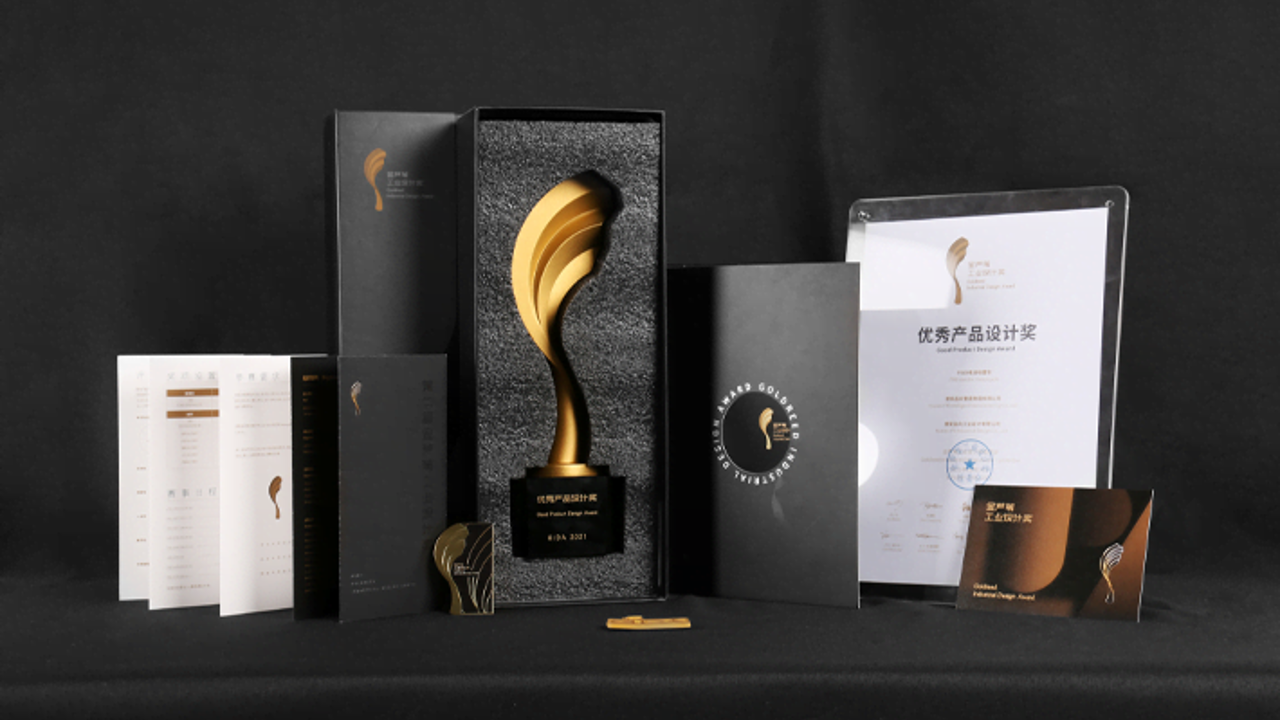
获奖者将获得相应奖金、奖杯及电子版获奖证书一份。参加本年度展览的作品将获得“参展证书”,赠予组委会的获奖作品可获得“收藏证书”。
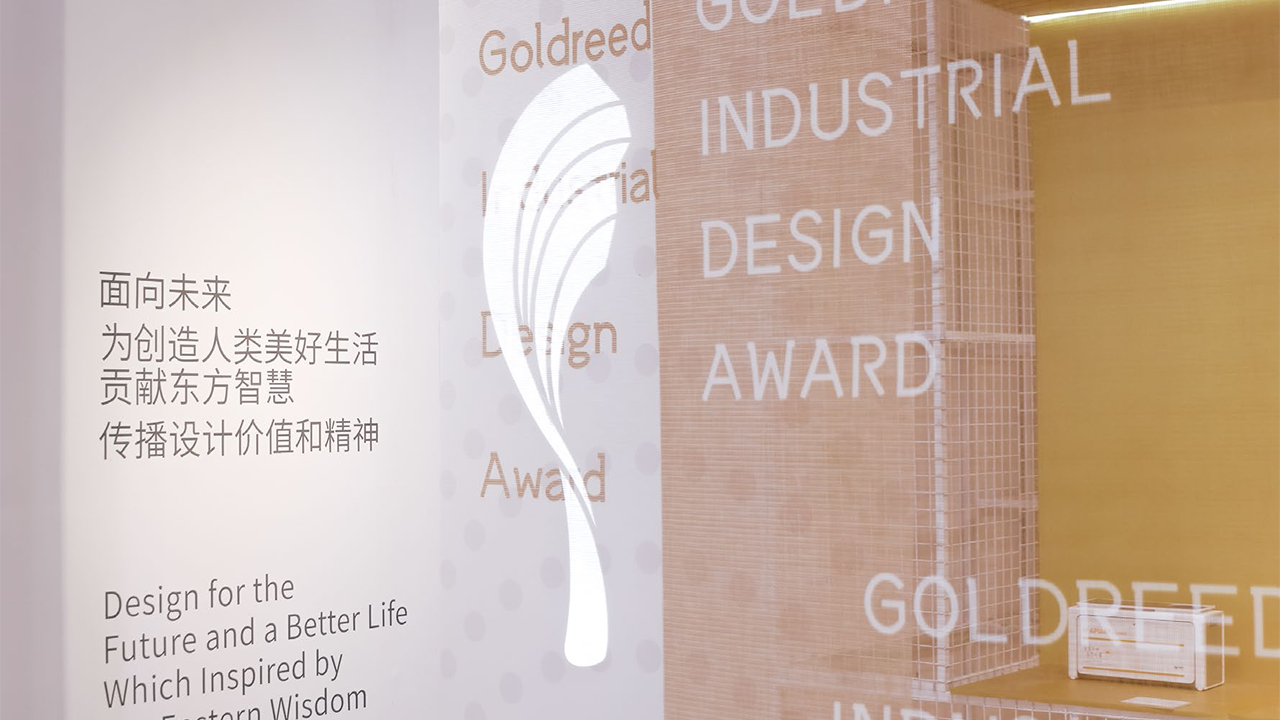
获奖作品可获得“金芦苇工业设计奖”徽标终身免费使用权。
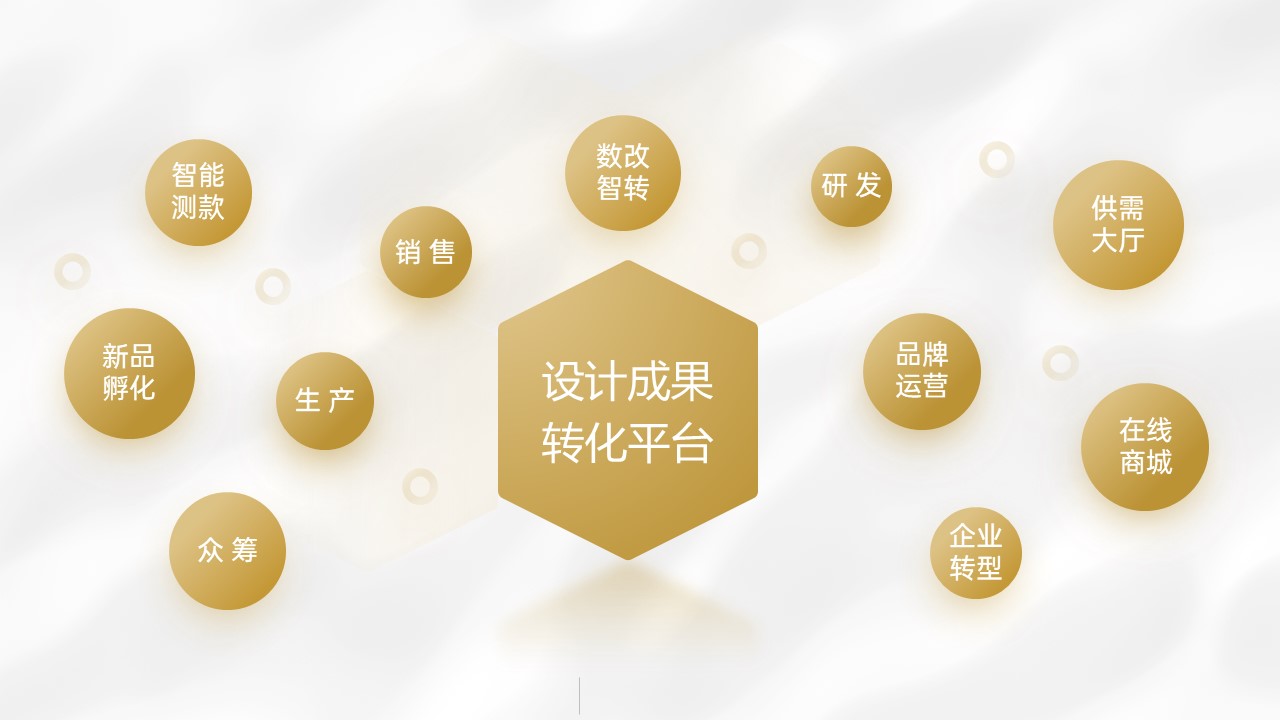
组织产业集群、工业设计企业、投融资、产业孵化及众筹机构等与意向参赛者进行对接,组织相关对接活动,促进项目产业化落地,优先推荐其在河北省各类载体落地应用。
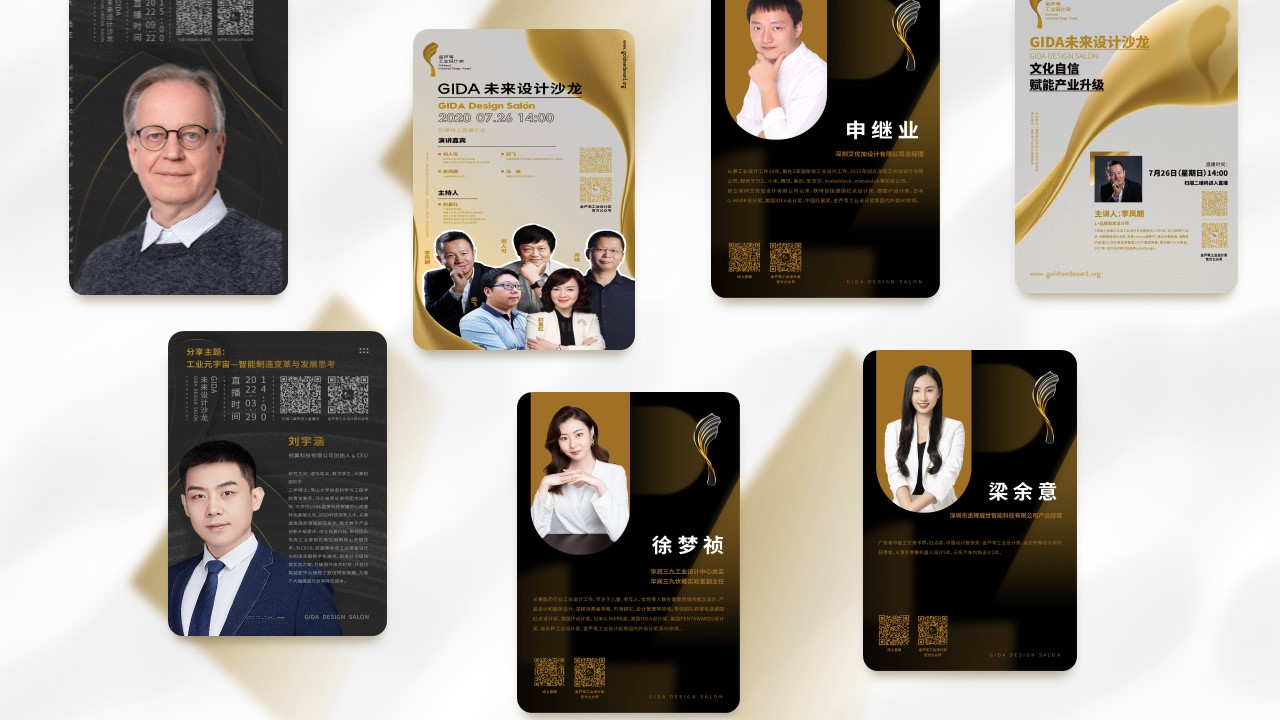
获奖者将受邀参加本年度颁奖典礼、河北国际工业设计周等系列活动,与来自全球设计界、学术界、媒体界、产业界等百余位行业代表面对面交流合作,同时将有机会担任“GIDA未来设计沙龙”等活动演讲嘉宾。
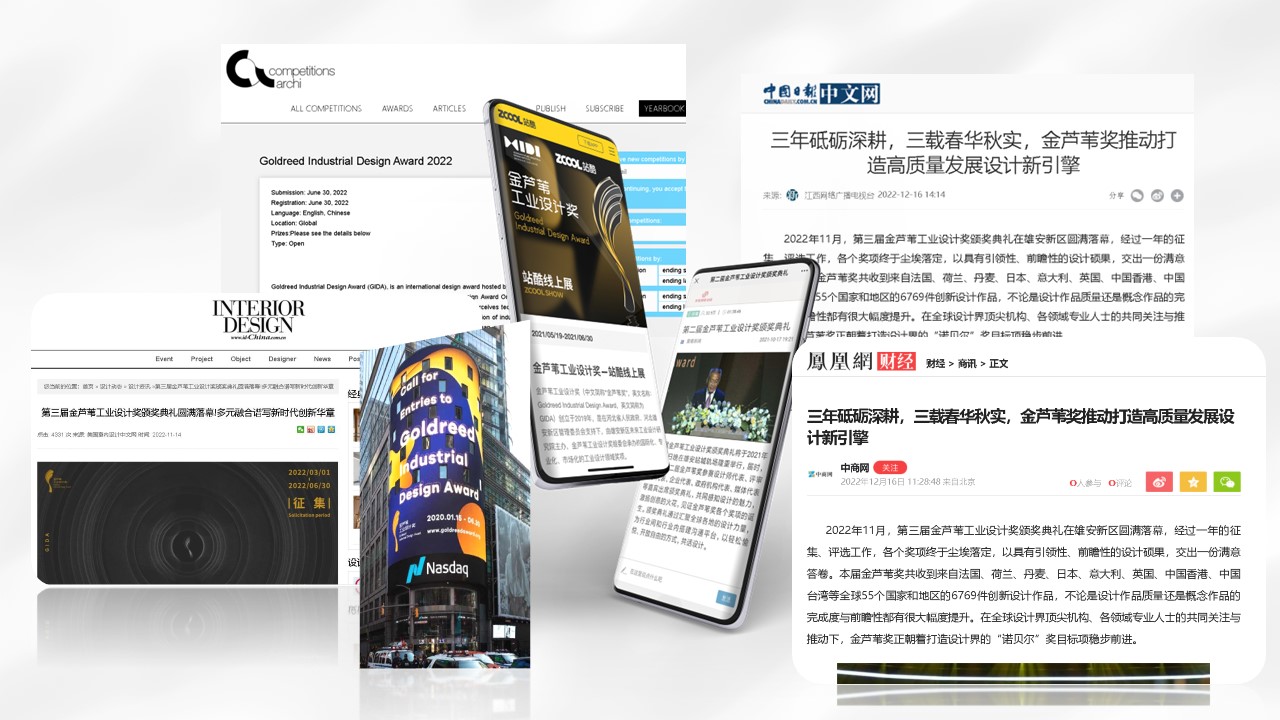
金芦苇奖已与全球百余家主流媒体建立覆盖不同行业和渠道的媒体推广网络,获奖者将优先推荐参与各大媒体专访,进一步增强优秀设计的社会影响力,助力优秀参赛者获得百万曝光率与推广度。
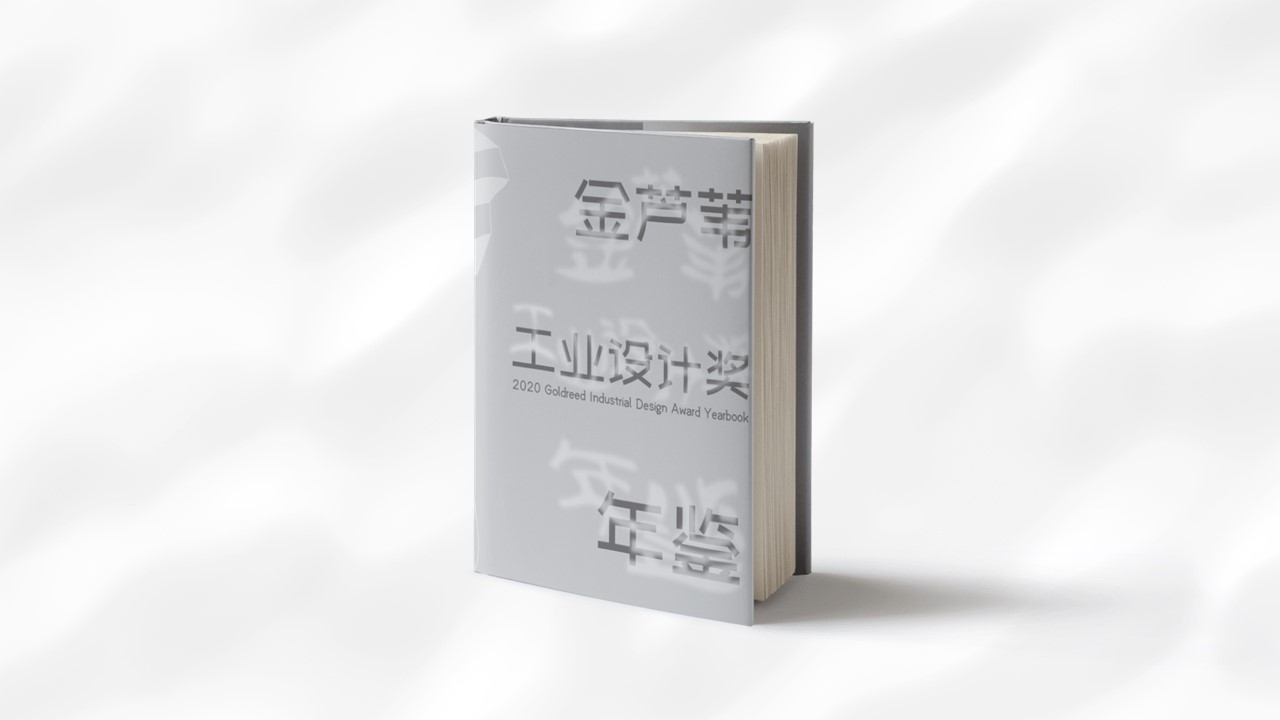
每届金芦苇奖都将编制优秀作品年鉴并加以推广,获奖作品将收录金芦苇奖年鉴。
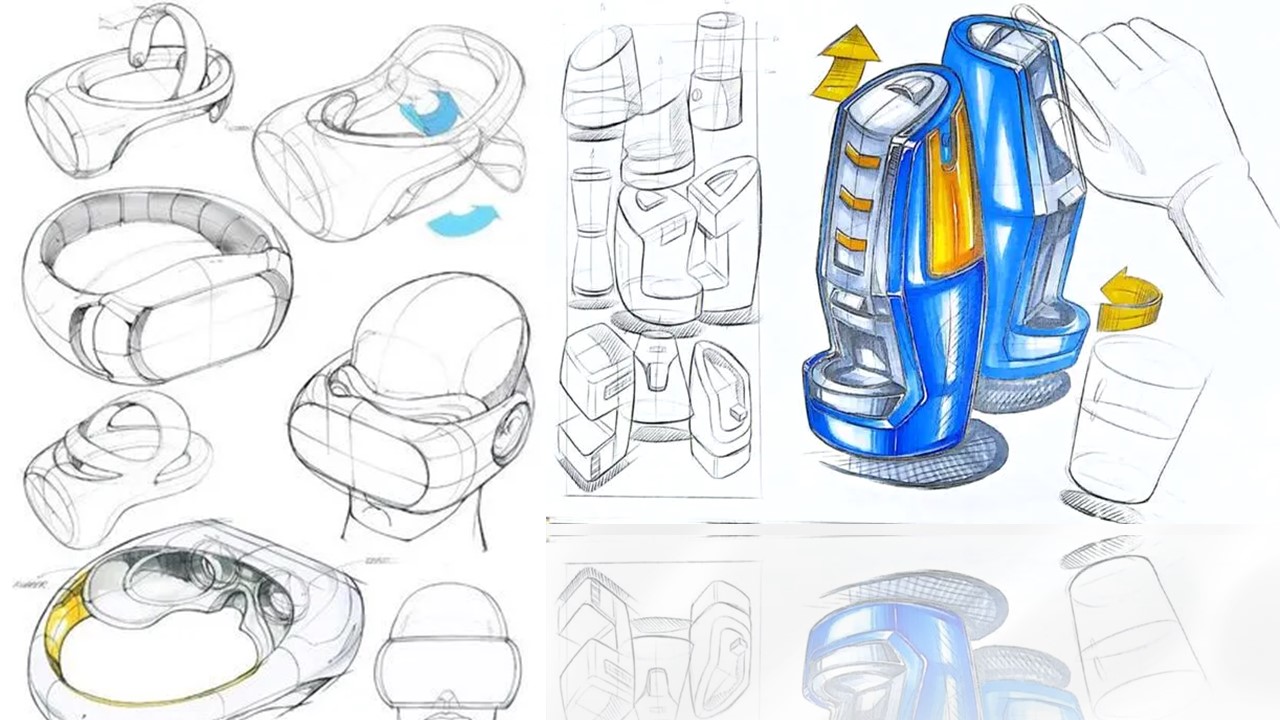
依据河北省支持工业设计发展相关配套政策,引导企业参与设计创新比赛,对获得金芦苇工业设计奖的获奖者提供资金奖励、人才引进、企业上市绿色通道、企业融资、引导资金申报优先支持等相应优惠政策。对获奖的在校学生,优先向重点工业设计企业等用人单位推荐实习和就业机会。
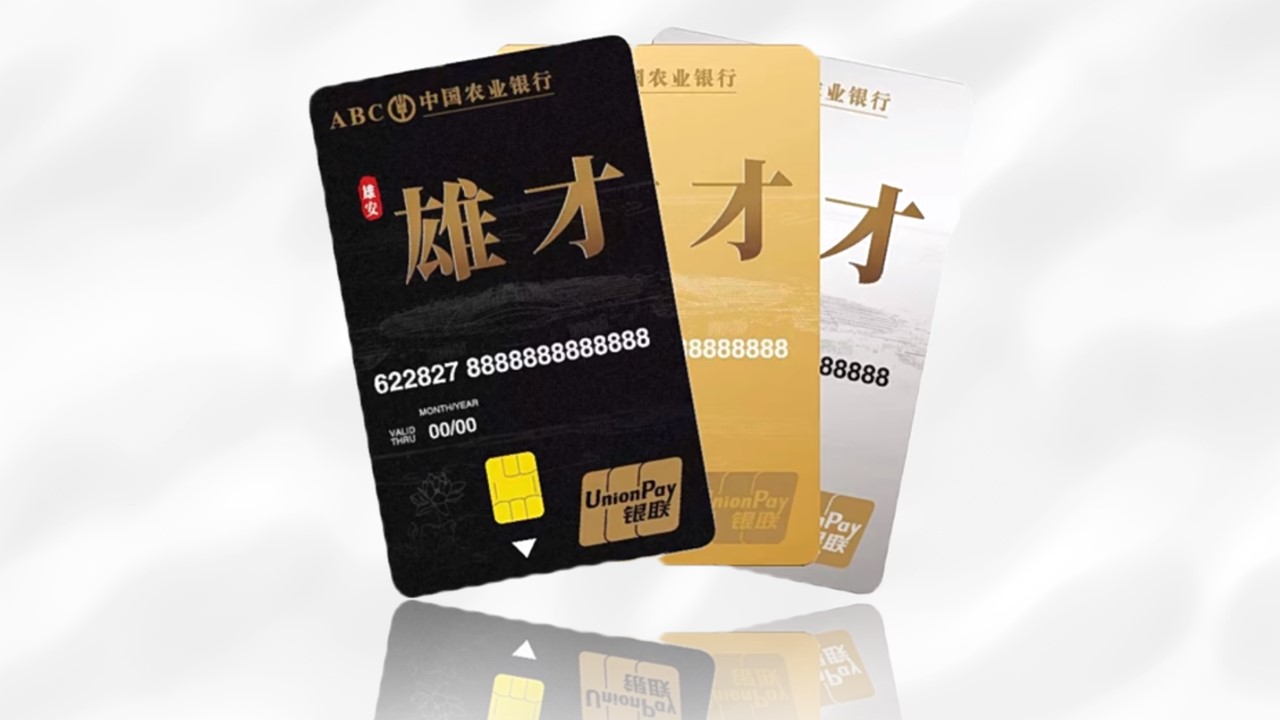
金芦苇奖获奖者符合《河北雄安新区“雄才卡”管理办法(试行)》中A、B、C类人才相应条件的,可分类申领“雄才卡”并对持卡人分类给予服务保障。金奖及以上获得者(前位3位完成人),属于雄安新区特聘B档人才,按用人单位给付薪资的 75%给予岗位奖励。
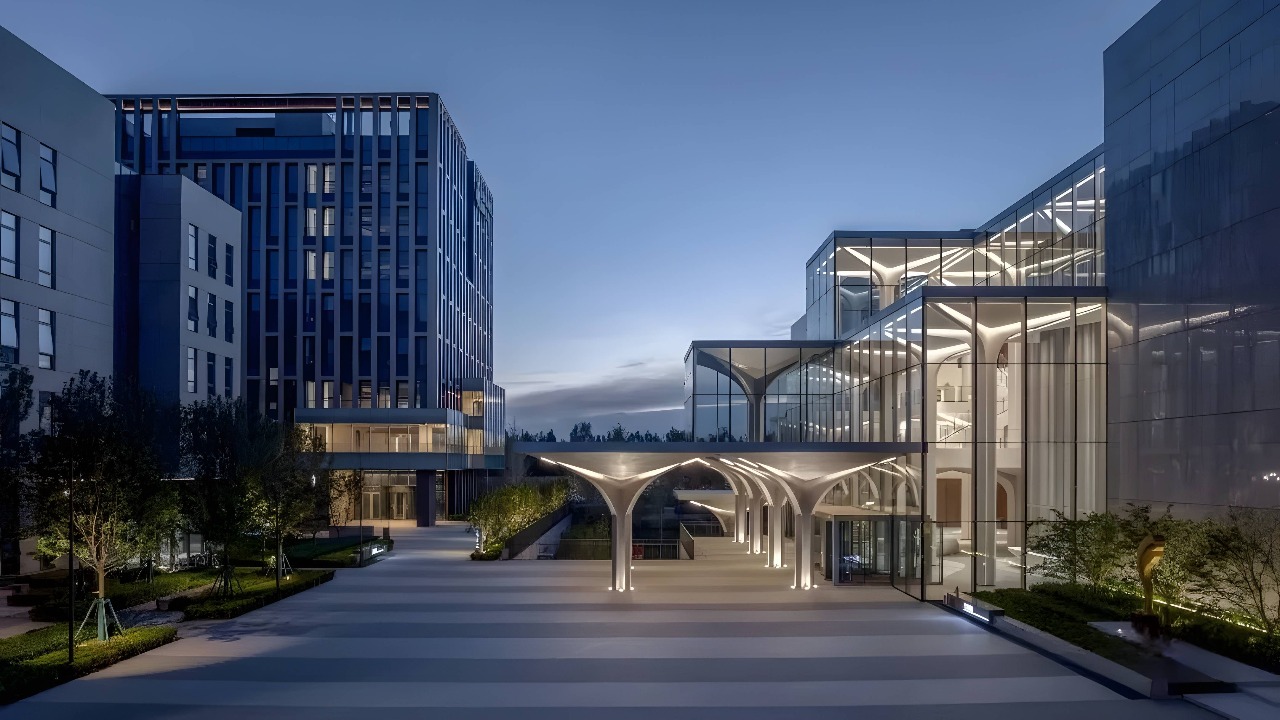
优先补贴获奖企业入驻“雄安绿色建筑展示中心”等新区产业载体,并配套提供拎包入住、人才公寓、租金优惠等服务和条件。
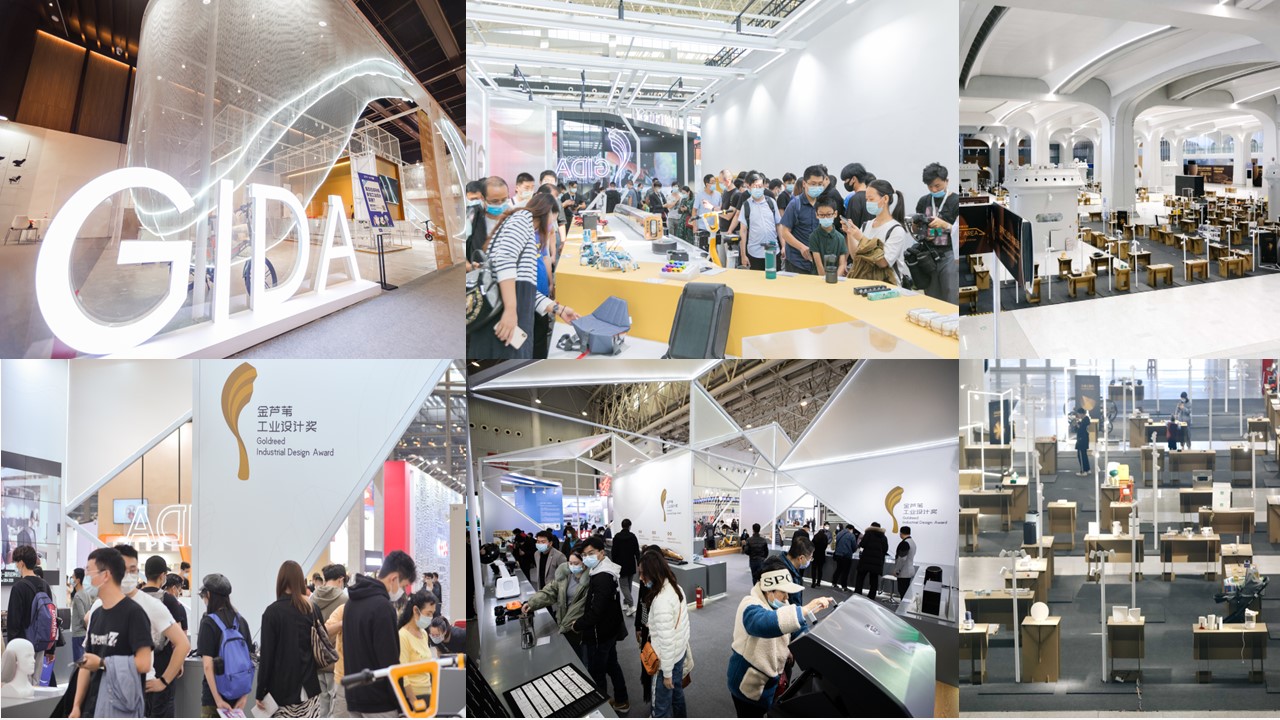
获奖作品可获得在雄安绿色建筑展示中心招商中心长期线下产品展示机会。同时,参与由金芦苇工业设计奖组委会的线上、线下全球巡展活动。
-
Protection of Intellectual Property Rights
a. Entrants must be the designer or owner of the entry (the owner of the relevant intellectual property rights, and there is no entry-related intellectual property disputes with others (no intellectual property disputes have occurred so far or have been properly handled). For entries that are applying for (documented) relevant intellectual property certificates but have not yet obtained official ones, entrants need to submit relevant proof in registration. For entries that have not obtained relevant intellectual property certificates after winning the prize, Xiongan Future Industrial Design Institute (hereinafter referred to as the "Organizer") and the Goldreed Industrial Design Award Organizing Committee (hereinafter referred to as the "Organizing Committee") have the right to require a written guarantee from entrants. For entries that have or may have intellectual property disputes, the Organizing Committee has the right to invalidate the registration.
b. Please download the Intellectual Property Statement of Goldreed Industrial Design Award Entries from the GIDA official website during registration, then scan the Statement which is properly signed and sealed, and upload it to the registration system.
c. If any economic or reputational losses are caused by defective entries, the Organizer and the Organizing Committee have the right to claim compensation from entrants. The compensation includes, but is not limited to, direct or indirect economic loss, reputation loss, litigation/arbitration fees, attorney fees, preservation fees, appraisal fees, etc.
d. In principle, the intellectual property rights of entries should be fully owned by entrants. If an entrant only enjoys part of the intellectual property rights of the entry, they should submit the consent form of all other intellectual property rights holders of the entry that allows it to compete for this award (i.e. Goldreed Industrial Design Award Entries Intellectual Property Statement).
-
Publicity and Secrecy
GIDA Organizer or the Organizing Committee has the right to use submitted entry information for award promotional campaigns on its own or entrust a third party, including but not limited to shooting, exhibitions, news reports, sorting and publishing, etc. All entries shall be deemed to be non-confidential, except entrants submitting a written application within five working days after registration. The Organizing Committee will not bear any losses caused by displaying entries in public.
-
Registration Information
Please fill in registration information accurately and truthfully, which cannot be modified once submitted.
The Organizing Committee has the right to refuse any request of modification if entrants find the registration information is incorrect after submission. In case of false information, the Organizing Committee has the right to invalidate the entry’s registration and the honor, and take back the prize. To make sure a smooth and orderly evaluation, the Organizing Committee and the Evaluation Committee have the right to adjust the entry category according to rules of the competition and realities of the entry. -
Registration Qualification
Only right holders of entry intellectual property rights are qualified to register, but duplicate registration is not allowed. To avoid duplicate registration, please confirm with relevant parties before registration. If any repeated registration is found, the following dispute over who owns the honor and prize will be resolved by entrants themselves, and the Organizing Committee will bear no legal responsibility. If the two parties who register repeatedly cannot coordinate within the time limit set by the Organizing Committee, the Organizing Committee has the right to invalidate the registration and honor of the entry, and take back the prize. The same entry can only be registered for one category in one group.
-
Notification and Feedback
All important notices such as evaluation results will be released through the official website and the registration system. Entrants are requested to pay close attention to the above information channels. If the entrant misses important information or fails to provide timely feedback as required and thus affects the evaluation, award collection and other procedures, all liabilities shall be borne by the entrant.
-
Entry Delivery
a. According to GIDA regulations, shortlisted entrants for the Second Evaluation are required to mail the physical product or prototype (model). Entrants must strictly comply with Entry Delivery Instructions for delivering and any overdue delivery will be deemed as waiving evaluation qualification.
b. All costs regarding entry transportation, insurance, and customs, shall be borne by entrants. If entries are damaged or lost during transportation, the Organizing Committee will not be held responsible.
c. During the “Delivery Information” inputting period, entrants should fill in delivery information in the registration system for the Organizing Committee to receive and return entries. The Organizing Committee shall only be responsible for the safety, security of the entry according to the delivery information. For the start and end time of "Inputting Delivery Information", please see details in the 5th GIDA Delivery Instructions for Shortlisted Entries (announced the same day with the first evaluation results).
d. All GIDA evaluations and exhibitions will take place at professional venues and entries will be transported, attended and evaluated in accordance with relevant industry standards. If insurance required, entrants shall purchase it themselves.
e. The Evaluation Committee will use and operate all entries at the site of the second and the final evaluation. Entrants must install and debug their entries to a usable state. If entrants need to entrust the Organizing Committee to install and debug, detailed installation videos or instructions must be provided. If the installation video or description is not clear enough, the Organizing Committee will not be responsible for the possible adverse consequences caused by those ambiguities and errors.
-
Donation and Collection
a. The Organizing Committee only collects the qualified awarded entries and grant them GIDA Collection Certificate.
b. The prized entries must be donated to the Organizing Committee. If entries are used for further research and development, too large to be transported, or exceeds the prize money in value, the winner must submit a written application and referential materials. In this case, the donation could be made by a scale model or prototype after being confirmed by the Organizing Committee.
-
Return
a. In principle, the Organizing Committee does not assume the responsibility for the return. If you need the Organizing Committee to return the entry on your behalf, please fill in the return information during the “Delivery Information” inputting period. Overdue requests will not be accepted.
b. The Organizing Committee only returns entries two times: (1) Only non-awarded entries will be returned after GIDA Good Designs Exhibition. (2) Awarded and the rest non-awarded entries will be returned after the Exhibition Tour. Specific delivery period will be announced on GIDA official website and registration system. To ensure the progress of evaluations and exhibitions, entry returning requests will be rejected during non-return period.
c. All costs regarding the return of transportation, customs and others shall be borne by entrants themselves. The Organizing Committee will use pay-on- delivery to send the entries back to China. Entrants shall also provide international express delivery payment accounts if their entries are returned overseas. The delivery time is subject to the logistics of the express, and the Organizing Committee is not responsible for the delivery time or the delivery consequence.
d. If the entrant fails to submit a return request during the “Delivery Information” imputing period, the Organizing Committee will charge a "Deferred Management Fee". The specific fee standard refers to the entry delivery instructions of the year. The Organizing Committee will arrange the return after receiving the payment, and the return time will be designated by the Organizing Committee, no urgent dispatch accepted.
e. Entrants will be deemed as waiving the ownership of the entry without completing the return information in the registration system in due course, nor contacting the Organization Committee to provide full return information by August 30, 2024. Then the Organization Committee enjoys all rights to deal with the physical entry.
f. The Organizing Committee will decide whether to choose the insured service when returning entries based on the return information filled in by entrants. When the entrant receives the entry, any damage or loss of the entry and the compensation liability caused by that shall be negotiated between the entrant and the logistic company, and the Organizing Committee shall bear no responsibility.
-
Certificate, Trophy and Prize
a. GIDA provides electronic certificates for awarded entries. All certificates will be automatically generated in the registration system after Final Evaluation, which shall be downloaded by entrants.
b. One trophy for each winner will be awarded at the GIDA Award Ceremony. Entrants who are unable to attend the ceremony will be deemed as waiving the trophy.
c. The Organizing Committee will award prizes to the winning entries based on the evaluation results. The prizes will be transferred to individual accounts or corporate accounts designated by the winners, in accordance with the relevant fiscal and taxation regulations and procedures of the People’s Republic of China.
Additionally, if the prize recipient and the submitting party are different, a written authorization signed and sealed by both parties must be provided.
-
Final interpretation right
Entrants should guarantee that they have read and agreed above entry terms and conditions in detail before submitting their entries. If the entrant cannot accept any of the above terms, please do not participate in this award competition. Once the entrant submits the entry, it means that he or she irrevocably agrees to all the above terms and conditions. The Organizing Committee reserves the right of final interpretation of the terms and conditions.

